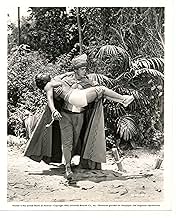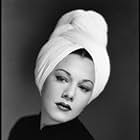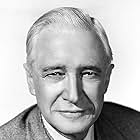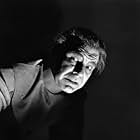IMDb RATING
5.7/10
1.3K
YOUR RATING
A beautiful woman is abducted from her peaceful South Seas home and taken to Cobra Island, where her grandmother Queen wants her to displace her evil twin sister and vengeance against her pr... Read allA beautiful woman is abducted from her peaceful South Seas home and taken to Cobra Island, where her grandmother Queen wants her to displace her evil twin sister and vengeance against her priest and corrupt advisor.A beautiful woman is abducted from her peaceful South Seas home and taken to Cobra Island, where her grandmother Queen wants her to displace her evil twin sister and vengeance against her priest and corrupt advisor.
Lon Chaney Jr.
- Hava
- (as Lon Chaney)
Paulita Arvizu
- Handmaiden
- (uncredited)
Vivian Austin
- Handmaiden
- (uncredited)
John Bagni
- Native
- (uncredited)
Robert Barron
- Chief Guard
- (uncredited)
Marie Bodie
- Handmaiden
- (uncredited)
George Bruggeman
- Guard
- (uncredited)
Carmen D'Antonio
- Dancer
- (uncredited)
Beth Dean
- Handmaiden
- (uncredited)
Thelma Joel
- Handmaiden
- (uncredited)
- Director
- Writers
- All cast & crew
- Production, box office & more at IMDbPro
Storyline
Did you know
- TriviaAt the time this film was made, Montez was (along with Abbott and Costello and Deanna Durbin) one of Universal's most popular box office attractions. As a result, no expense was spared in its making, and it features many of the elements that came to personify "The Maria Montez formula": an exotic, fictional setting, vividly colorful (and occasionally outrageous) costumes, elaborate special effects (including matte paintings and process shots) and expensive sets. It was also, like most of Montez's movies, filmed in the then expensive process of Technicolor. More than 75 years after its release, this is Montez's best-remembered film, yet it is now in the public domain.
- GoofsHow did the chimpanzee travel from the mainland to Cobra Island?
- ConnectionsFeatured in The Thoughts That Once We Had (2015)
Featured review
COBRA WOMAN (Universal, 1944), directed by Robert Siodmak, is the fourth Technicolor adventure pairing Maria Montez and Jon Hall, in not only their best known movie, but has been labeled a top "camp" favorite among Montez fans. It is also regarded the movie so awful that it's totally impossible not to dislike. A statement to that affect was once said by actor Roddy McDowall in a TV interview back in the early 1990s on the American Movie Classics cable channel in an interview opposite host Professor Richard Brown.
The story begins on the day of the marriage of Tollea (Maria Montez) to Ramu (Jon Hall). Tollea is kidnapped by the Cobra people, a tribe of snake worshipers, and taken to Cobra Island where she learns from the Queen (Mary Nash) that she is actually the older twin sister of Princess Naja (Montez), the island's wicked High Priestess. The Queen wants Tollea to assume the rightful place as High Priestess and to bring an end to her evil twin's cruel reign. Easier said than done! In the meantime, Ramu learns of what has happened to Tollea and he decides to rescue his beloved from Cobra Island. Ramu is accompanied by his young native friend, Kado (Sabu), who not only tries to help his friend out of trouble, but gets into trouble himself.
While the accented Maria Montez assumes two roles, it appears that most of the footage in this 70 minute adventure goes to Indian boy, Sabu, along with his pet monkey, Koko, each adding some "comedy" relief to the plot. Unlike most South Seas tales of jungle movies of that era, which find many of the central male characters wearing only loincloth, like Johnny Weissmuller's Tarzan, for example, Sabu, as in many of his previous prime adventure films, including the timeless classics of THE THIEF OF BAGDAD (UA, 1940) and THE JUNGLE BOOK (UA, 1942), appears bare-chested and wearing only a trim white bathing suit that might have been a rental from a Hollywood beach club. Although a young man in his late teens or early 20s, Sabu's screen character appears more child-like, a role that might have been more suited possibly to a younger actor, particularly when he finds Ramu's love making Tollea a lot of nonsense. Always assisting Ramu (Hall), Kado saves his life in one scene by using his trusty blow pipe with darts to eliminate an attacking wildcat. In good faith, Kado later comes to Ramu's rescue once again by trying to free him from being held prisoner in a dungeon, only to find that Ramu has already escaped and placed the evil Martok (Edgar Barrier), Naja's minister of affairs, in his place. Because Kado is unable to tell him the whereabouts of the escaped Ramu, Martok gives orders to his guards to have Kado suffer tree torture (the torture which is described by native girl, Veda (Lois Collier) to Ramu as, "Boy's hands tie high on tree, feet tie low on ground. Tree stand up, stretch little fellow") until he confesses.
Special screen credit in the opening and closing cast list goes to Lon Chaney Jr., Universal's resident screen actor of horror, taking time off from playing The Wolf Man, Klaris, the living mummy, and character leads in six "Inner Sanctum" mysteries (1943-1945). Chaney plays Hava, a muted beer-belly servant to the island ruler, who becomes Kado's rescuer from his tree torture after learning of the lad's predicament from the monkey, Koko (Yes, the monkey and the mute communicate!); Also in the supporting cast are Samuel S. Hinds as Father Paul, who, in the opening of the story, relates the legend of Cobra Island; with Moroni Olson and Fritz Leiber appearing in smaller roles.
Aside from the unheard of character names used in this screenplay, it's obvious that any movie like this cannot be taken seriously. Other than that, the plot consists of some inane dialog spoken by Sabu, Montez and other actors throughout. Montez gets to highlight the story with her snake dancing, accompanied by exotic music along with gongs banging in the background from time to time. Occasionally, it's hard not to laugh at Montez's portrayal of the evil sister, which consists of her sending her sacrificial victims into a volcano, or using her whip while going into a frenzy of passion. As for tropical romance, Hall and Montez even get to have an underwater kissing scene together - but which sister is he kissing?
Yes, COBRA WOMAN all has these ingredients and more. Maybe that's why it has become a Maria Montez favorite for so long. Montez would appear in other adventure tales through the duration of the 1940s, a few more opposite Jon Hall, but none as memorable as this. Sadly, Montez died at the age of 31 in 1951. As for Hall, his best screen opportunity, being Samuel Goldwyn's THE HURRICANE (UA, 1937), opposite Dorothy Lamour, was behind him. More forgettable adventure films were ahead of him.
As popular as COBRA WOMAN has become over the years, especially with frequent television revivals on local television from the 1960s to the 1980s, to date, it has yet to be distributed on video cassette or DVD. It has been revived more than any of the five (out of six) Montez and Hall adventures on cable's American Movie Classics, where it premiered in February of 1995. For the record, WHITE SAVAGE (1943) is among the neglected. While the other Montez-Hall films have ceased airing on AMC, COBRA WOMAN has survived on that channel the longest. COBRA WOMAN was also presented on the Sci-Fi Channel in the 1990s during the very late hours of the night. But one question persists. What does this South Seas adventure story of COBRA WOMAN have to do with science fiction? (**1/2)
The story begins on the day of the marriage of Tollea (Maria Montez) to Ramu (Jon Hall). Tollea is kidnapped by the Cobra people, a tribe of snake worshipers, and taken to Cobra Island where she learns from the Queen (Mary Nash) that she is actually the older twin sister of Princess Naja (Montez), the island's wicked High Priestess. The Queen wants Tollea to assume the rightful place as High Priestess and to bring an end to her evil twin's cruel reign. Easier said than done! In the meantime, Ramu learns of what has happened to Tollea and he decides to rescue his beloved from Cobra Island. Ramu is accompanied by his young native friend, Kado (Sabu), who not only tries to help his friend out of trouble, but gets into trouble himself.
While the accented Maria Montez assumes two roles, it appears that most of the footage in this 70 minute adventure goes to Indian boy, Sabu, along with his pet monkey, Koko, each adding some "comedy" relief to the plot. Unlike most South Seas tales of jungle movies of that era, which find many of the central male characters wearing only loincloth, like Johnny Weissmuller's Tarzan, for example, Sabu, as in many of his previous prime adventure films, including the timeless classics of THE THIEF OF BAGDAD (UA, 1940) and THE JUNGLE BOOK (UA, 1942), appears bare-chested and wearing only a trim white bathing suit that might have been a rental from a Hollywood beach club. Although a young man in his late teens or early 20s, Sabu's screen character appears more child-like, a role that might have been more suited possibly to a younger actor, particularly when he finds Ramu's love making Tollea a lot of nonsense. Always assisting Ramu (Hall), Kado saves his life in one scene by using his trusty blow pipe with darts to eliminate an attacking wildcat. In good faith, Kado later comes to Ramu's rescue once again by trying to free him from being held prisoner in a dungeon, only to find that Ramu has already escaped and placed the evil Martok (Edgar Barrier), Naja's minister of affairs, in his place. Because Kado is unable to tell him the whereabouts of the escaped Ramu, Martok gives orders to his guards to have Kado suffer tree torture (the torture which is described by native girl, Veda (Lois Collier) to Ramu as, "Boy's hands tie high on tree, feet tie low on ground. Tree stand up, stretch little fellow") until he confesses.
Special screen credit in the opening and closing cast list goes to Lon Chaney Jr., Universal's resident screen actor of horror, taking time off from playing The Wolf Man, Klaris, the living mummy, and character leads in six "Inner Sanctum" mysteries (1943-1945). Chaney plays Hava, a muted beer-belly servant to the island ruler, who becomes Kado's rescuer from his tree torture after learning of the lad's predicament from the monkey, Koko (Yes, the monkey and the mute communicate!); Also in the supporting cast are Samuel S. Hinds as Father Paul, who, in the opening of the story, relates the legend of Cobra Island; with Moroni Olson and Fritz Leiber appearing in smaller roles.
Aside from the unheard of character names used in this screenplay, it's obvious that any movie like this cannot be taken seriously. Other than that, the plot consists of some inane dialog spoken by Sabu, Montez and other actors throughout. Montez gets to highlight the story with her snake dancing, accompanied by exotic music along with gongs banging in the background from time to time. Occasionally, it's hard not to laugh at Montez's portrayal of the evil sister, which consists of her sending her sacrificial victims into a volcano, or using her whip while going into a frenzy of passion. As for tropical romance, Hall and Montez even get to have an underwater kissing scene together - but which sister is he kissing?
Yes, COBRA WOMAN all has these ingredients and more. Maybe that's why it has become a Maria Montez favorite for so long. Montez would appear in other adventure tales through the duration of the 1940s, a few more opposite Jon Hall, but none as memorable as this. Sadly, Montez died at the age of 31 in 1951. As for Hall, his best screen opportunity, being Samuel Goldwyn's THE HURRICANE (UA, 1937), opposite Dorothy Lamour, was behind him. More forgettable adventure films were ahead of him.
As popular as COBRA WOMAN has become over the years, especially with frequent television revivals on local television from the 1960s to the 1980s, to date, it has yet to be distributed on video cassette or DVD. It has been revived more than any of the five (out of six) Montez and Hall adventures on cable's American Movie Classics, where it premiered in February of 1995. For the record, WHITE SAVAGE (1943) is among the neglected. While the other Montez-Hall films have ceased airing on AMC, COBRA WOMAN has survived on that channel the longest. COBRA WOMAN was also presented on the Sci-Fi Channel in the 1990s during the very late hours of the night. But one question persists. What does this South Seas adventure story of COBRA WOMAN have to do with science fiction? (**1/2)
- How long is Cobra Woman?Powered by Alexa
Details
- Release date
- Country of origin
- Language
- Also known as
- Die Schlangenpriesterin
- Filming locations
- Production company
- See more company credits at IMDbPro
- Runtime1 hour 11 minutes
- Aspect ratio
- 1.37 : 1
Contribute to this page
Suggest an edit or add missing content






















